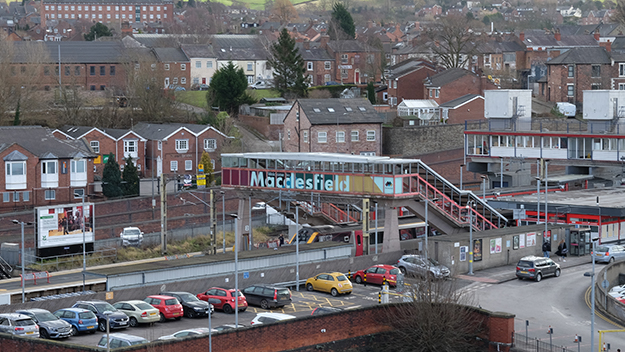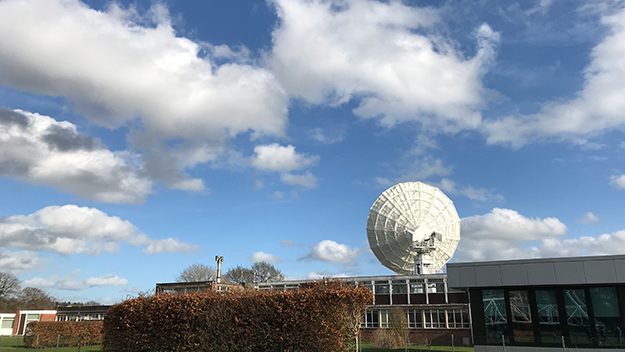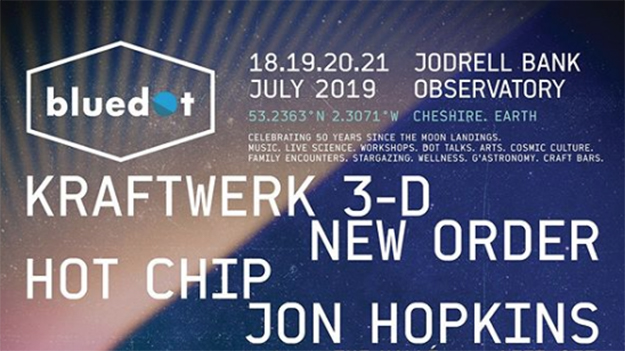In July 2019, the Jodrell Bank Observatory near Manchester could be declared as UNESCO World Heritage Site. Take an enlightening trip from Cardiff with these tips.
.embed-container { position: relative; padding-bottom: 56.25%; height: 0; overflow: hidden; max-width: 100%; } .embed-container iframe, .embed-container object, .embed-container embed { position: absolute; top: 0; left: 0; width: 100%; height: 100%; }
The smell of fresh manure is in the air. The windows have been reflecting cows, sheeps, farms and green fields since the car left Macclesfield travelling towards Cheshire.
A couple of turns later there is something suspicious in the environment, and it is not the smell of manure. Between the trees and farms, there is a giant, white, metallic and parabolic structure breaking the countryside horizon.
It is the Lovell Telescope, the third largest antenna of the world and the landmark of the Jodrell Bank Observatory, an iconic site which has been selected for the UK Government as the UNESCO World Heritage Site 2019 candidate.
Here are all the key things to know about this observatory only four hours from Cardiff.
How to reach and where to stay

Time: 3h 10 minutes in train from Cardiff.
Cost: From £55.
The Jodrell Observatory is in Cheshire, England. The easiest way to travel the 175 miles from Cardiff to Macclesfield is by train. Prices for return tickets start at £55.
There is not public transportation in the area of Macclesfield, so it is necessary to book private transportation to the observatory. Taxis run regularly from Macclesfield station to Jodrell Bank, a 15 – 20 minute ride.
Bicycles are also a good choice to reach the observatory. There are four National Cycling Network routes (55,70, 71 and 573), and it is common to see big cyclist platoons on the road.
For accommodation, there are options in Macclesfield for as low as £30, or several farms with views to the observatory in the Cheshire area starting at £70.
Discovery Centre
Open times: Daily from 10am to 5pm. Last admission at 4pm.
Cost: Adults £8.50, children aged 4 to 18, £6.50, under 4s free.
Every visit starts at the Jodrell Bank Discovery Centre, which is divided in three Pavilions (Planet, Space and Star). Tickets to enter are £6,50 for children and £8,50 for adults. It worth to check the concessions before travel. There are discounts for families or groups.
The Planet Pavilion offers an information trip which starts on Planet Earth, continues through the solar system and ends with the most distant objects in the universe.
A must-see of the visit is hanging in the ceiling of the pavilion: a giant clockwork Orrery, a mechanical model of the solar system, the largest of its kind in the world!
The visit continues in the Space Pavilion. In this place the visitor learns how the radio telescopes, like the Lovell Telescope, are used to study the objects in space. Instead of collecting optical light – the one that the human eye can see – radio telescopes capture radio waves revealing information hidden from optical telescopes.
That means that all the selfies with phones must be taken in airplane mode. Mobile signals interfere with the work of the telescopes. There are signs guiding with information about the correct use of mobile phones in the site.
Really big antennas

After the pavilions, it is recommended to stretch the legs walking the track around the Lovell Telescope.
The Lovell telescope was opened to the astronomers in 1957 under the name “250 ft telescope.” But in 1987 the name was changed to honor one of it creators, Sir Bernard Lovell, who was the first director of the observatory.
The giant steerable dish of the Lovell Telescope, which is 76.2m, 1,500 tonnes and 90m high, has been helping in different areas of astronomy such as tracking space probes during the space race to the moon or studying mysterious objects of the universe like black holes.
It is worth sitting down next to the telescope to watch how it moves. In the meantime, kids can play is the different playgrounds space themed across the garden surrounding the Lovell Telescope. There is a cafeteria in the Planet Pavilion to grab a bite and recover energy.
After a muffin or a coffee, the visitor can continue the circular track. The control room of the telescope will be to the left, and it can be distinguished because of the larger rectangular glasses facing to the telescope.
A couple steps ahead and more dishes will be visible like the Mark II radio telescope with a dish of 38.1m.
SKA Telescope

Continue walking until the end of the track. There will be the brand-new headquarters of the Square Kilometre Array Telescope or SKA, “A game changer in astronomy,” says Mathieu Isidro, Deputy Communications & Outreach Manager of the organization.
“SKA will tackle everything from studying gravitational waves, detecting the signal from the first stars and galaxies in the Universe, studying giant cosmic magnets, mapping the distribution of hundreds of millions of galaxies in the Universe and of course looking for an intelligent signal if there is one,” says Isidro.
The project is huge. The astronomers will install a square kilometre of antennas in Australia and South Africa. There are 12 countries involved in the project including the UK but also Australia, Canada, China and India.
The SKA will become operable in the next decade.In the meantime, people can be involved in different ways.
“We have inspiring profiles of some of our scientists and engineers as well as teacher resources available on our website, we have a virtual reality tour available on vr.skatelescope.org,” says Isidro.
Bluedote Festival

Date: July 18, 19, 20, 21.
Ticket: £179.25 (adult weekend camping).
The Jodrell Observatory is not only place for science. During July, the place is the home of the Bluedot Festival, a massive event which mixes music and science for four days.
This year the line-up includes the musical groups Kraftwerk, New Order and Hot Chip and speakers like the women’s rights activist Dr. Helen Pankhurst and the physicist Jim Al-Khalili.
It worth it to book in advance. The empty green fields of the observatory are covered by tents and hundreds of people follow the music and science talks. Prices for tickets and accommodation can be found here.
